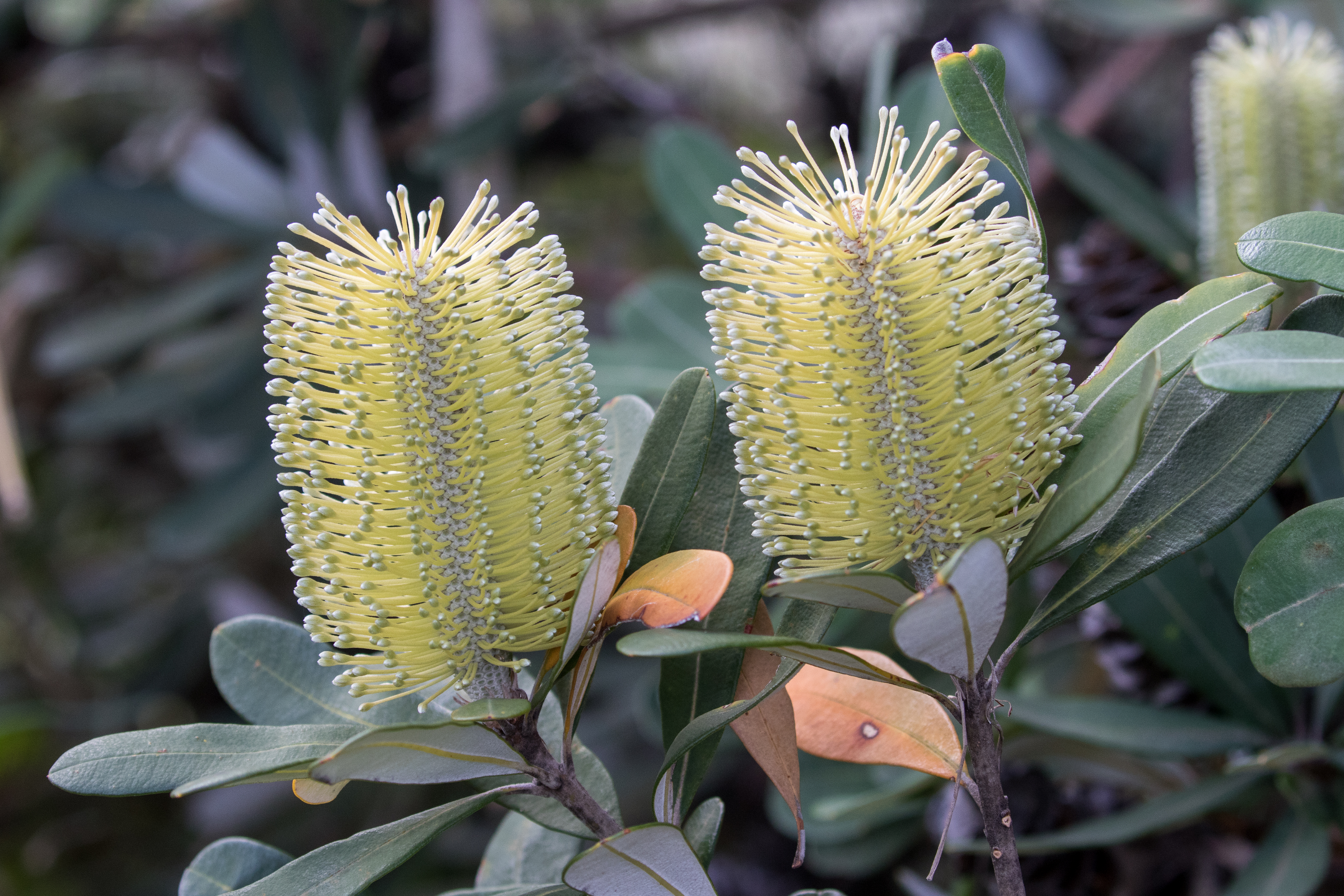Coast banksia
(Banksia integrifolia)

Description
Banksia integrifolia is an iconic Australian tree belonging to the family Proteaceae. It is commonly known as Coast Banksia or Coastal Banksia and is distributed along the eastern and southern coastlines of Australia, from Queensland to Victoria. It is a medium-sized evergreen tree, growing up to 25 meters tall, with a rough and grey-brown bark, and large, leathery, dark green leaves. The tree produces large spikes of yellow or greenish-yellow flowers in late summer and autumn, which are followed by distinctive woody seed cones. Taxonomy Banksia integrifolia was first described by the botanist Robert Brown in 1810, based on specimens collected by the botanist James Edward Smith. The species name "integrifolia" refers to the plant's entire leaves (i.e. lacking lobes or teeth). Description Banksia integrifolia is a medium-sized evergreen tree that can grow up to 25 meters tall, but is usually smaller. It has a single trunk with rough, grey-brown bark that is deeply furrowed and slightly fissured. The bark becomes more rough and furrowed with age, and can have a distinctive corky texture near the base of the tree. The leaves of Banksia integrifolia are large, leathery, and dark green. They are generally elongated and have an entire margin (i.e. lacking lobes or teeth). The leaves are alternately arranged on the branches and can grow up to 15 centimeters long and 4 centimeters wide. The flowers of Banksia integrifolia are produced in large spikes or inflorescences, which can be up to 25 centimeters long and 10 centimeters wide. The individual flowers are yellow or greenish-yellow and have long styles protruding from the center of the flower. The flowers are produced from late summer to autumn, and are a valuable food source for nectar-feeding birds and insects. The seed cones of Banksia integrifolia are large and woody, and can grow up to 15 centimeters long and 10 centimeters wide. The cones remain closed until they are exposed to fire or other environmental stresses, at which point they open and release the seeds. The seeds are small and winged, and are dispersed by wind. Ecology Banksia integrifolia is adapted to a range of habitats, from coastal dunes to sclerophyll forests. It is a hardy plant that can tolerate a range of soils, from sandy to clayey, as long as they are well-drained. It prefers full sun to part shade, and is tolerant of salt spray and wind. Banksia integrifolia is an important plant for wildlife, as it provides nectar and pollen for a range of birds, insects, and mammals. Honeyeaters, in particular, are known to visit the flowers of Banksia integrifolia, and use them as a food source. The seed cones of Banksia integrifolia also provide a food source for a range of wildlife, including birds, insects, and small mammals. Fire is an important ecological factor for Banksia integrifolia, as it stimulates the opening of the woody seed cones and promotes the germination of the seeds. Banksia integrifolia is adapted to survive and recover from fire, and can regenerate from its lignotuber (an underground swelling that stores nutrients and allows the plant to resprout after fire). Cultivation Banksia integrifolia is a popular ornamental plant in Australia, and is also grown in other parts of the world. It is a hardy plant that is relatively easy to grow, and can be propagated from seed or cuttings.
Taxonomic tree:







